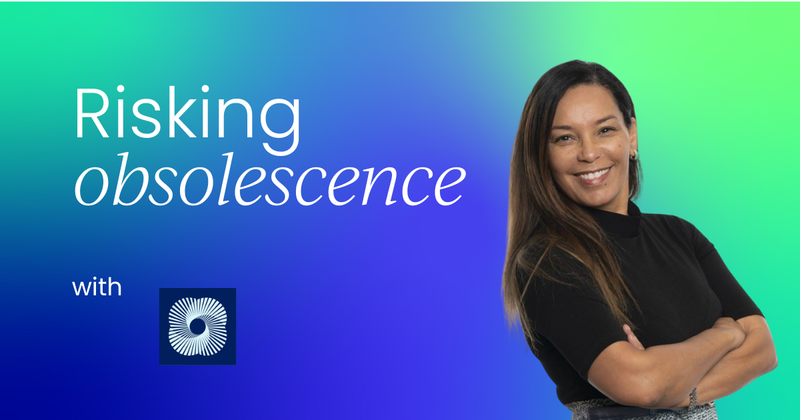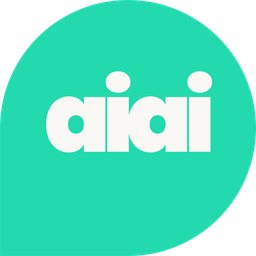Imagine this: It’s 2025. The CEO of a mid-sized tech company, overwhelmed by the rapid changes in AI, realizes the company is missing out. Despite having the latest tools and software, there’s still a gap—a missing strategic vision to make it all work seamlessly.
That’s when they decide to hire a Chief AI Officer. Within a year, the company transforms. Customer satisfaction is up, operations are smoother, and new revenue streams have opened. The CAIO didn’t just bring AI; they brought a revolution.
Artificial intelligence has evolved from an experimental technology to a core business necessity, reshaping operations, decision-making, and customer experiences. As its influence grows, so does the need for specialized leadership.
Enter the Chief AI Officer (CAIO), a role dedicated to embedding AI into the organization’s DNA. But what exactly does this role bring to the table that other tech executives might not?
Why a Chief AI Officer?
In many companies, AI initiatives have traditionally been managed by IT departments or overseen by roles like the Chief Data Officer (CDO) or Chief Technology Officer (CTO).
However, as AI’s impact broadens, the demand for dedicated AI leadership becomes clearer. A CAIO does more than oversee implementation; they shape how AI integrates with the organization’s core functions and long-term objectives.
Several critical factors underscore the rise of this role:
- Specialized expertise in emerging AI applications: Implementing AI at a strategic level requires not only technical knowledge but also industry-specific insights. CAIOs need to stay ahead of AI’s evolving applications, including in non-traditional sectors like education, nonprofits, and disaster response. A CAIO with insights into these fields can tailor innovations to meet unique industry challenges, creating a distinct competitive advantage.
- Ethical and regulatory leadership: AI’s rapid adoption introduces pressing ethical and regulatory issues, from privacy concerns to managing bias. CAIOs play a crucial role in ensuring that AI systems adhere to ethical principles, such as those outlined in the UNESCO Recommendation on the Ethics of Artificial Intelligence. By establishing clear guidelines and monitoring AI’s impact, CAIOs can help mitigate potential harms, promote transparency, and foster public trust—elements critical for organizations that seek to lead responsibly in AI.
- Driving business transformation: The CAIO’s role goes beyond introducing AI tools; it’s about transforming business processes, opening new revenue streams, and improving customer experience. For instance, the grant proposal tool I implemented reduced preparation time by over 30 hours per proposal, illustrating the kind of measurable impact that a CAIO can bring. Positioned at the executive level, the CAIO drives AI initiatives that create significant, lasting change.
- Workforce development and transformation: The demand for AI talent is high, and a CAIO is essential in attracting, developing, and retaining team members who can deliver on AI strategies. They foster an AI-savvy culture that integrates technical and business knowledge across the workforce. By prioritizing internal training and upskilling, CAIOs can help employees embrace AI as a valuable tool, not a threat.
- Cross-departmental integration: AI’s reach extends to every corner of a business, impacting marketing, customer service, HR, and beyond. A CAIO ensures that AI adoption is cohesive and strategic, breaking down departmental silos to drive alignment with the company’s goals. For example, implementing an AI recommendation engine across product development and customer service can streamline and enhance the entire customer journey, delivering value at every touchpoint.

Key responsibilities of a Chief AI Officer
A CAIO’s responsibilities are diverse and strategic, encompassing the oversight of AI initiatives, risk management, and performance measurement. Key duties include:
- Strategic planning: Develop a clear AI vision, prioritize high-impact projects, and collaborate with other executives to ensure AI initiatives align with organizational goals. Strategic planning with a CAIO is about more than timelines; it’s about identifying projects that will have meaningful, transformative impact.
- Implementation oversight: Oversee the end-to-end development and deployment of AI initiatives, ensuring each project—from model design to deployment—meets strategic objectives. CAIOs prioritize high-ROI projects and track their success to showcase AI’s tangible value within the organization.
- Governance and ethics: Establish ethical governance frameworks to manage biases, protect data privacy, and adhere to regulations, embedding responsible AI practices within the organization’s culture. In my work developing governance frameworks, I’ve built models to track and mitigate bias, highlighting that ethical AI governance is an ongoing process, not a one-time setup.
- Change management and education: Drive AI adoption across the organization by addressing concerns, promoting understanding, and providing upskilling opportunities. Educating employees about AI’s benefits is critical for fostering acceptance and creating a culture where AI is seen as empowering, not disruptive.
- Performance measurement and iteration: Set and monitor metrics—such as efficiency gains, revenue impact, and customer satisfaction improvements—to assess AI’s success. CAIOs continuously refine AI strategies to adapt to technological advancements, making performance measurement a cornerstone of AI leadership.
Is a CAIO right for your organization?
Not every organization may need a dedicated CAIO. For smaller businesses or those with limited AI applications, roles like the CTO or CDO might sufficiently cover AI needs.
However, companies with ambitious AI goals—especially in complex or regulated sectors like finance, healthcare, or retail—can gain substantial value from having a CAIO to focus on AI’s strategic alignment, ethical oversight, and cohesive deployment.
For organizations that aren’t yet ready to bring on a CAIO, developing CAIO-like responsibilities within existing roles can serve as a bridge. This approach prepares the organization to navigate AI’s growing influence, positioning it to embrace a future where the CAIO role might become essential.
The CAIO doesn’t just drive AI strategy; they align AI initiatives with the broader business vision, ensuring that implementations are impactful, ethical, and compliant. In an era where AI is integral to business success, a CAIO’s focused leadership could be the competitive edge that organizations need to stay ahead.
Conclusion
The emergence of the Chief AI Officer marks a pivotal shift in business, where AI becomes a strategic driver of innovation and a core element of corporate vision.
For organizations committed to responsible, comprehensive AI adoption, a CAIO can be the catalyst that unites people, processes, and technology, future-proofing the organization in an AI-powered world.
Transforming customer experiences, developing an AI-capable workforce, and establishing ethical standards, a Chief AI Officer (CAIO) plays a crucial role in driving the change needed to navigate today’s ever-evolving AI landscape.
Want more from Dr. Denise Turley?
Check out her other articles below:




 Follow us on LinkedIn
Follow us on LinkedIn



